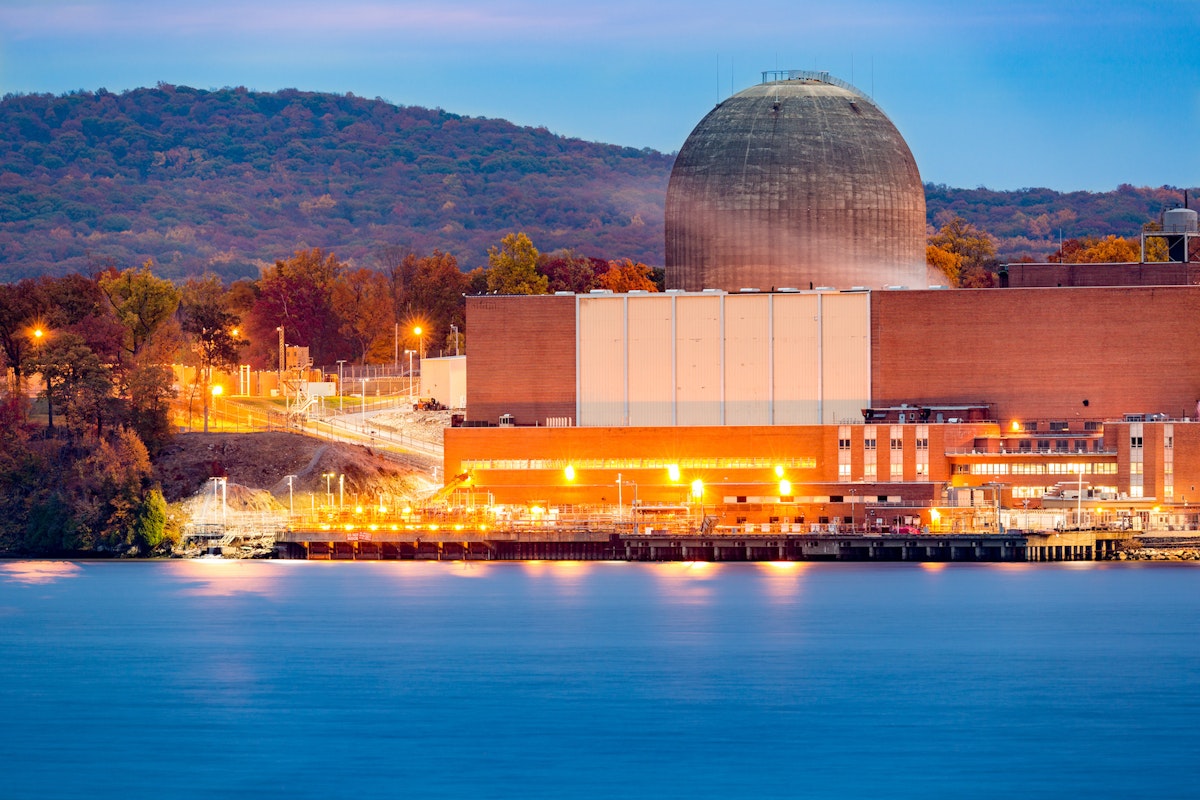Stop Calling Nuclear Reactors "Aging"
Many of them work better now than when they first opened

-
-
Share
-
Share via Twitter -
Share via Facebook -
Share via Email
-
How do you know when a power plant is old?
For people who don’t like nuclear energy, “aging reactors” has become a reflexive condemnation. And while it is true that much of the current fleet of reactors was built in the 1970s and 1980s, that doesn’t necessarily make the reactors “old.” Nuclear is still a young technology, after all, and it’s hard to say what the natural life expectancy of a reactor should be, because none of the type used in the United States have yet died of old age. And while 20 years might have seemed optimistic in the 1970s, reactors easily blew passed that and 80 increasingly seems within reach. In turn, if 80 represents old age, then the fleet operating now is middle-aged.
Skeptics’ apparent distaste of middle age aside, reactors’ longevity should be seen as a feature, not a bug. In fact, the real bug is the short lifetimes of the carbon-free alternatives.
Wind turbines, for example, are very likely to be retired at age 10, when their Production Tax Credits dry up. As CleanTechnica recently declared, a “repowering Tsunami is coming.” Partly because it is so hard to get permission to build a new wind farm and partly because of rising rural opposition to industrializing fragile natural environments, one solution is to kill off the ones already running.
Solar panels, too, degrade over time. As with nuclear, solar is too new a technology to know its true life expectancy, but 25 years (and probably less) seems to be the limit.
Why is a wind turbine with a 10-year life expectancy better than a nuclear plant that will produce energy for a human lifetime? Around the United States, solar and wind farm lifetimes are so short, in fact, that they can be considered a bridge to the advanced nuclear reactors that will begin serious deployment in the 2030s.
All this begs the question, of course, of why reactors’ age has become such a frequent point of discussion.

The first reason is that reactors were initially licensed for only 40 years because that’s what utilities tended to use as a depreciation schedule. Some supporters also believed that the technology would be obsolete in 40 years, replaced by more advanced models.
But the 40-year licensing period led many among the general public to conclude that the reactors would retire when they hit that mark. When the time came, there was little reason for them to do so. Not only did the reactors outlive their licenses, they got better with age. Early on, they ran for nine months and refueled for three. Even in the months they were running, they “tripped” often. Now they produce, on average, about 92 percent of the electricity that would result if they operated 24/7/365, a measure called “capacity factor.” Partly for this reason, reactors are now seen less as wasting assets than as valuable resources, requiring reinvestment and modernization, but with a long future ahead of them.
Another reason for the focus on lifespan is the changing reason for reactors’ operation. The industry has its origins in efforts to reduce conventional coal pollutants, but those are vastly reduced today. Now, the technology is primarily seen as a key to controlling carbon dioxide emissions, which was a more hypothetical concern in the second half of the last century.
When Southern Company sought a 20-year license extension for its plant, Hatch, it listed reducing carbon dioxide as part of its rationale. Hatch already has permission to run to 60 years old; this would extend the license to 80 years. A twin-unit plant near Baxley, GA, Hatch will continue to help assure reliable electric service.
Hatch isn’t alone. Eighty-eight of the country’s 92 reactors have received one 20-year life extension (to get them to 60) and 15 reactors are undergoing the application process for another extension (to get them to 80). The Nuclear Energy Institute, the industry’s main trade association, recently said that about 90 percent of utilities will eventually apply. Two Florida Power and Light reactors, Turkey Point 3 & 4, have received such permission.
Even if the public is not generally aware of the potential of nuclear plants to last for decades more, the industry certainly is. When Constellation Energy, the country’s largest nuclear operator, recently purchased a 44 percent share of the South Texas Project, the company’s CEO, Joe Dominguez, pointed out that the reactors were licensed until “well past mid-century,” and said that was “approximately twice as long as new renewable energy installed today.” The reactors began operating in 1988 and 1989, meaning they have already lasted twice as long as a typical “renewable”—solar or wind—plant.
The industry expects to spend $7 billion in capital investments on its “old” reactors in the next ten years, plus more money to de-bottleneck some of them so they can generate more electricity.
To be sure, just because reactors can last a long time doesn’t mean they do. Rancho Seco began commercial operation in April 1975 but closed in June 1989. In between, it had a capacity factor of only about 40 percent, which was low even by the standards of the period. Rancho Seco was owned by the Sacramento Municipal Utility District, and the ratepayers voted to close it. The cooling towers and a fenced-in cluster of spent fuel cannisters remain.
This example is instructive. When reactors in the United States close today, they do not typically do so because of age. They close because of unfavorable economics—or perceived political problems. Politics is what killed Indian Point in New York and kicked off that state’s re-carbonization.
Age may be less of a talking point among anti-nuclear activists when it comes to the advanced reactors that will be built in the next few years. The builders’ expectations for 80 years are now explicit. And designers have made small changes that reduce some metallurgical changes that have been observed to occur with reactor age. And reactor operators have learned how to scrupulously control water chemistry, to preserve metal parts.
The nuclear future is probably not centered on the large, light-water reactors operating today, at least not in the United States. But the longevity of existing reactors is important to the success of the advanced reactors now moving towards commercialization.
Maintaining the supply chain and the workforce at the current plants preserves an environment that makes building and maintaining new reactors easier. The skills and parts needed for the next generation are not identical, but they are similar in many cases. And promoting a more realistic expectation of reactor lifetime—among policy makers, the financial community, and the public—is good for the next generation of plants.
New reactors offer components that are essential for the grid of the 2030s and 2040s, including the flexibility required to share a system with intermittent renewables. But there is still plenty of space for the workhorses that serve baseload demand now.
